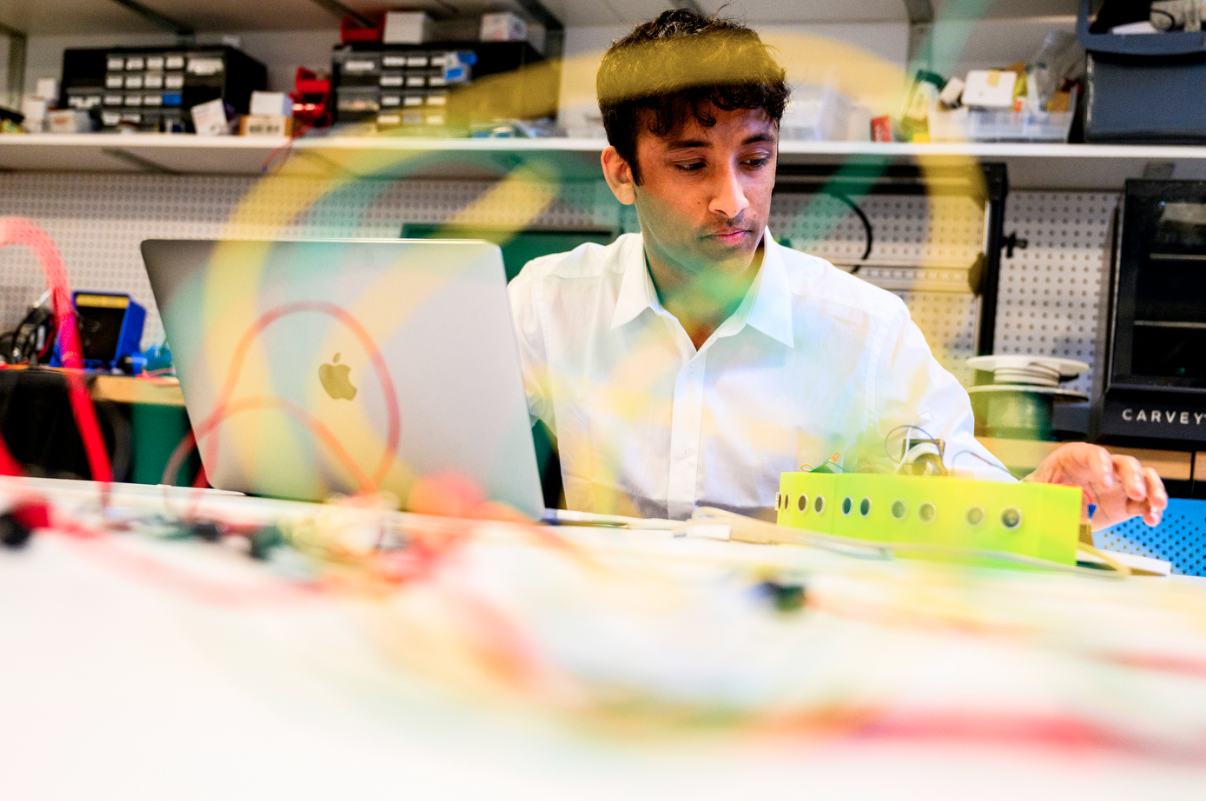Sarah Connors has multiple sclerosis and limited vision, hearing and mobility. So the hallways, elevator and other residents also using wheelchairs present regular obstacles at The Boston Home where she lives — particularly when they are behind her and she is moving in reverse.
Enter Northeastern University’s Enabling Engineering class and the Haptic Ultrasonic Location Assistant (HULA).
“This system is what best caters to Sarah as our client,” says Alexander Pervizi, a third-year student studying electrical engineering and physics and a member of the team that developed HULA.
The Enabling Engineering class applies engineering to enable and empower individuals with disabilities. Students can select one of several projects focused on addressing the needs of clients who have a disability, and the students present the projects at the end of the semester.




